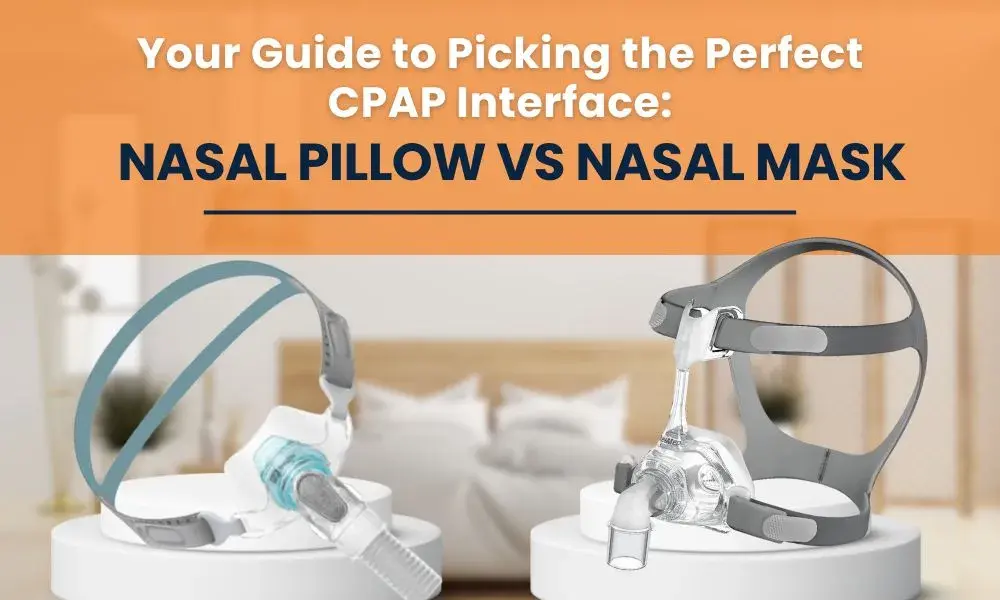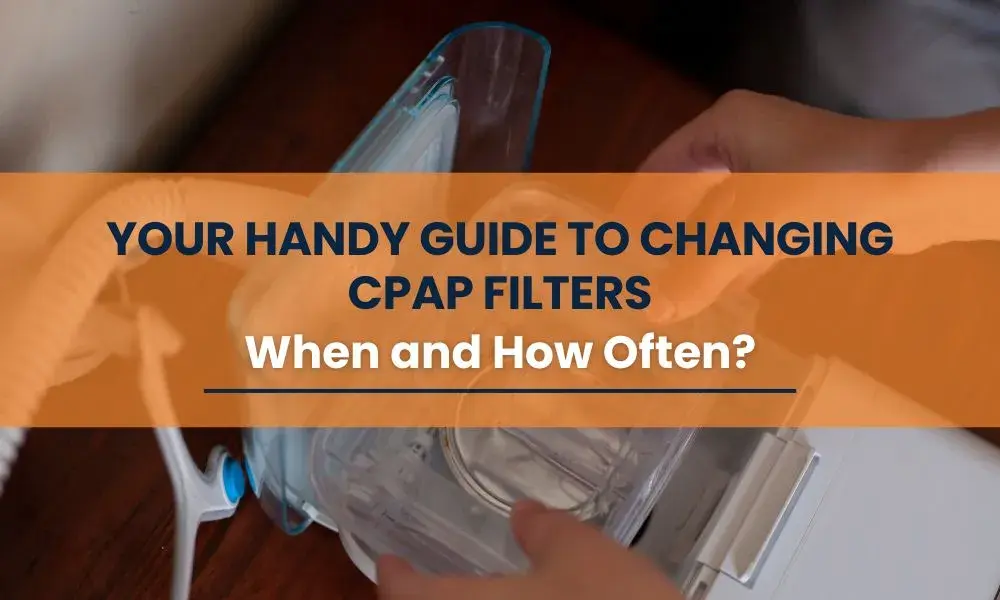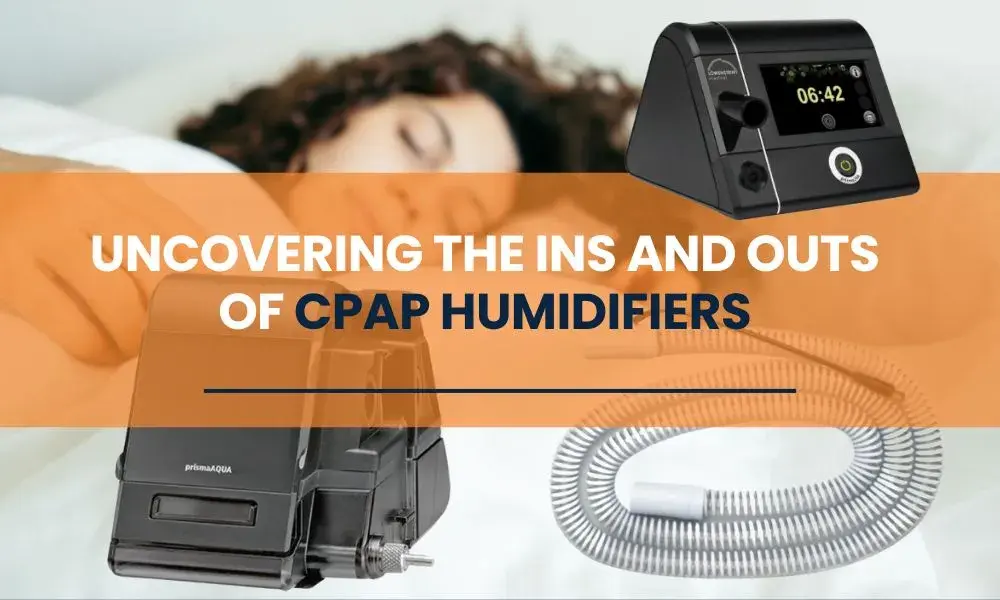If you’ve been diagnosed with sleep apnoea, chances are your doctor has recommended continuous positive airway pressure (CPAP) therapy as a treatment option. CPAP therapy involves using a CPAP machine that delivers a constant flow of air through a mask to keep your airways open while you sleep.
One of the key decisions you will need to make when starting CPAP therapy is choosing the right interface – whether to opt for a nasal pillow or a nasal mask. In this guide, we will walk you through the differences between these two interfaces to help you make an informed decision.
Understanding the Basics of CPAP Interfaces
Finding the right CPAP setup that fits with your lifestyle and is comfortable. This is where the CPAP interface comes into play. Essentially, we’re talking about two main types here: nasal pillows and nasal masks. Nasal pillows are dainty devices that fit directly into the nostrils. They’re so lightweight and compact, you’ll barely notice them. On the flip side, we have nasal masks, which take on a more encompassing approach by covering the entire nose, offering a snug fit secured by head straps.
While both aim to ensure a peaceful night’s sleep by keeping your airways unobstructed, their unique designs cater to a variety of individual needs and preferences. Whether it’s a matter of comfort, ease of use, or compatibility with your sleeping habits, understanding these distinctions is your first step towards embracing CPAP therapy with open arms. So, let’s dive deeper and explore which of these two paths might lead you to the restful sleep you’ve been dreaming of.
The Lowdown on Nasal Pillows: Pros and Cons
Nasal pillows are distinctive in the CPAP therapy landscape for their streamlined design and featherlight presence. They are exceptionally suited for those who seek simplicity and minimal contact, making them a boon for the claustrophobic or spectacle wearers keen on indulging in a bedtime read or two.
Their design facilitates a broader visual field, allowing users to engage in late-night TV binge-watching or to lose themselves in a book without obstruction. However, they may not be everyone’s cup of tea, particularly for individuals prone to nasal blockages or those who find the direct nostril fit a tad uncomfortable.
It’s also worth noting that achieving a perfect seal is crucial for effective therapy, and this may present a challenge for some users with nasal pillows. With these considerations in mind, weighing up the pros and cons of nasal pillows is a key step towards finding your ideal CPAP companion.
Exploring the Comfort of Nasal Masks
Nasal masks, embracing your nose in a gentle hug, provide a reassuring sense of stability throughout the night. They’re particularly favoured by individuals who find comfort in a more pronounced barrier against the night air or those who navigate sleep with a bit of movement.
For mouth breathers or those accustomed to higher pressure settings from their CPAP machine, nasal masks shine by delivering a consistent and effective airflow, ensuring a seamless night’s sleep. Their design, slightly more robust than their nasal pillow counterparts, features adjustable straps that ensure a secure and tailored fit, adapting seamlessly to the contours of your face. This adaptability makes them an excellent choice for a diverse range of facial structures, offering peace of mind for those concerned about air leaks or disruptions in therapy.
While they might seem a tad more conspicuous, the trade-off is the dependable seal and comfort they offer, making them a worthwhile consideration for anyone prioritising effectiveness and a feeling of security in their CPAP therapy journey.
Making the Choice: Factors to Consider
Selecting the most suitable CPAP interface may appear like navigating a maze at first glance, but don’t worry – with a bit of insight and reflection on your personal habits and needs, the decision can become significantly clearer. Consider factors such as:
- Preferred sleeping position: Do you sleep on your side or do you find comfort lying on your back? Each interface has its advocates based on sleeping styles, with nasal pillows being popular among those who change positions frequently due to their minimalist design.
- Bedtime routine: For those of us who wear glasses or those who enjoy a bedtime routine that involves reading or watching TV, the unobtrusive nature of nasal pillows may sway the decision in their favour.
- Breathing method: If you breathe through your mouth while sleeping or have been prescribed a higher CPAP pressure, the comprehensive support of a nasal mask may provide a better night’s sleep.
- Nasal or respiratory conditions: Take into account any specific nasal or respiratory conditions you may have, as these could affect your comfort and the effectiveness of your CPAP therapy.
Trying out both types of interfaces hands-on can also reveal which option best suits your lifestyle and comfort requirements, leading to a more restful and rejuvenating sleep. At Rockingham CPAP, we offer two week mask trials to help you find the perfect fit with your CPAP interface.
Tips for Adjusting to Your New CPAP Interface
Acclimatising to your new CPAP interface may be a bit challenging in the beginning, however, persistence pays off.
- Start slowly: Begin by incorporating the interface into your routine in a gradual manner. Wearing it during relaxed moments at home can help ease the transition, allowing your body to adjust to the sensation of wearing it without the pressure of immediately needing to fall asleep.
- Keep it clean: It’s also essential to maintain a regular cleaning schedule for your interface, ensuring it remains hygienic and functioning at its best.
- Seek professional guidance if uncomfortable: Should you encounter any discomfort or the fit feels slightly off, don’t hesitate to consult with your GP or call the team at Rockingham CPAP. We can offer adjustments, advice, or alternatives to improve your experience.
Remember, patience and persistence are key; every small step you take towards getting comfortable with your CPAP interface brings you closer to achieving the uninterrupted sleep you deserve.
Breathe Easier with Rockingham CPAP
Finding the right CPAP nasal interface can make or break your entire CPAP therapy experience. Don’t struggle through with the mask that comes with your CPAP machine.
If you’re finding your current mask setup uncomfortable, then give the Rockingham CPAP team a call. We are dedicated to helping you get a good night sleep, every night. Contact us to book a consultation or view our CPAP mask options on our website.



